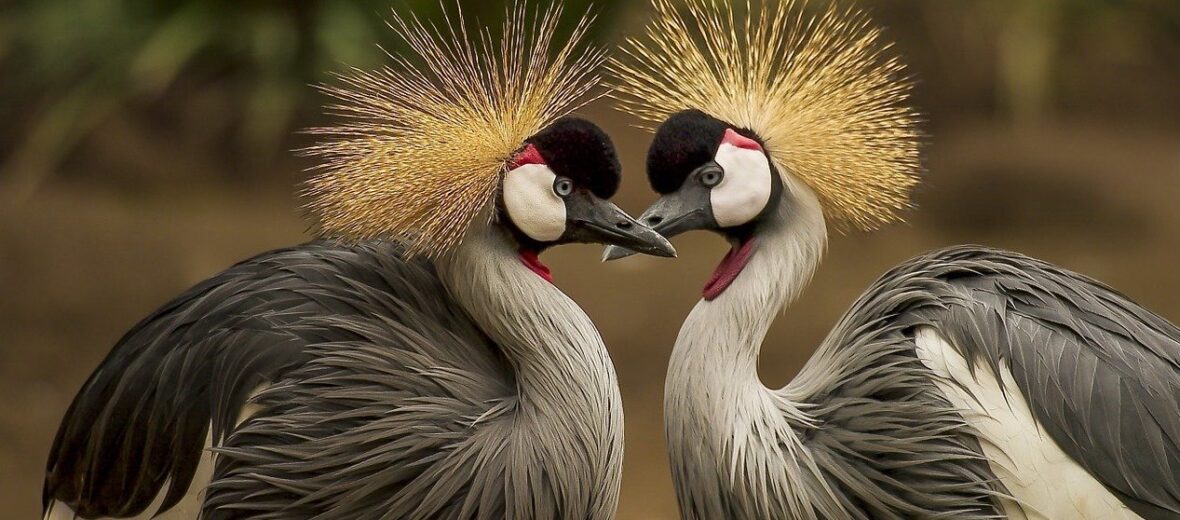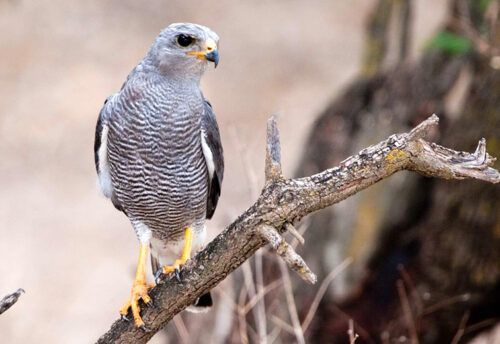
The grey crowned crane is a dignified and elegant bird that is found in Kenya, South Africa, Uganda, and Zimbabwe. These birds prefer wetlands, marshes, open grasslands, savannahs, and cultivated fields. Due to livestock farming and ranching, pesticide pollution, mining, collection for the pet trade, and vehicle strikes, their loss has been great and these beautiful birds are listed as Endangered by the IUCN, with their population decreasing. There are only an estimated 22,000+ birds remaining, to date.
First the Stats…
Scientific name: Balearica regulorum
Weight: Up to 7.7 lbs.
Length: Up to 3.3 feet
Wingspan: Up to 6.6 feet
Lifespan: Up to 25 years
Now on to the Facts!
1.) Crowned cranes feed on various groundnuts, maize, soybeans, millet, insects, worms, frogs, lizards, crustaceans, and small mammals; making them omnivorous (eat plant and animal matter).
2.) Flocks can reach 150 strong.
3.) Grey crowned cranes don’t migrate, but they do relocate in order to stay near food and water.
4.) Crowned cranes are sometimes preyed on by domestic dogs.
5.) These critters often display bowing, dancing, and jumping behaviors.
But wait, there’s more on the grey crowned crane!
6.) They communicate via preening each other and by being vocal. Chicks produce a shrill peep sound and adults respond with a purring sound.
7.) These birds are only territorial when it comes to nesting. Otherwise, they are social.
Did you know…?
This critter is Uganda’s national bird and is featured on their flag, as well as their coat of arms.
8.) Females lay between 2 – 3 eggs, that incubate in 30 days.
9.) A booming call is sometimes made, via the help of a red gular sac. They also make a honking sound.
10.) Grey crowned cranes are monogamous (mate for life).
But wait, there’s still more on the grey crowned crane!
11.) The grey crowned crane has a prehensile hind toe that is used to grip branches of trees, where they’ll roost to avoid predators.
12.) Believe it or not, these birds make great pets and adapt to captivity quite well.
Did you know…?
Grey crowned cranes are a sacred symbol for Namibia, Kenya, Zambia, and South Africa.
13.) While hunting for food, these cranes will stomp the ground with their feet to flush out insects that they then consume.
14.) They have been seen following cattle, as the bovines will trample the ground, sending insects out of hiding.
15.) Believing that these birds can bring rain, many tribes will utilize pictures of these cranes, in their rituals, to invoke rain.
Now a Short Grey Crowned Crane Video!
Also, check out the Critter Science YouTube channel. Videos added frequently!
Want to suggest a critter for me to write about? Let me know here.



